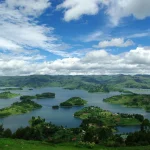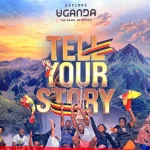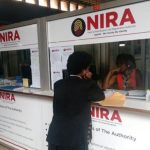Uganda has got a variety of tribes with each tribe speaking its own language. These tribes migrated from different countries and others are origins of the country. The following is the list of tribes in Uganda and their brief facts including where they are located.
Acholi
The Acholi are found in Northern Uganda and they occupy an area commonly known as Acholiland. They are found in districts including Agago, Amuru, Gulu, Kitgum, Nwoya, Lamwo, and Pader.
The Acholi population is estimated to be between 1.5 and 2 million, with the 2002 Uganda census indicating that they were approximately 1.17 million. Some of the Acholi population is living in South Sudan as a Luo nation in Magwi County.
The main language for the Acholi is known as Luo or Lwo and it is mutually intelligible with Lango, Alur, and other Luo languages.
IK people
This tribe is also known as the Tueso found in the northeastn Uganda in the Karamoja region. Ik translates to a head of migration. The tribe migrated from Ethiopia and first settled in Kenya later they moved to Uganda in the area of Kidepo Valley National park. The Ik people stayed with their warrior neighbors for instance the Jie, Turkana and Toposa who live in the Semi arid East African region. The tribe didn’t have much wealth so they Kept small herds of goat, sheep and cow. Chicken rearing was also done. Due to counter raids from Karamoja warriors who claimed that their god Akuj gave them a birthright to all cattle. All cows that belonged to Ik people were confiscated by these traditional warriors The Ik people also possessed hunting skills, fruit gatherers and also practiced crop growing along the Karamoja plains.
Alur
Like the Acholi, Alur are also part of the larger Luo group who live in Northwestern Uganda while some also live in northeastern Democratic Republic of Congo (DRC). The Alur occupy districts including Nebbi, Zombo, and Arua near Murchison falls National park while in DRC they mostly reside in the area north of Lake Albert.
Majority of the Alur people speak the Alur language while others speak Lendu or Kebu. Their current population is estimated to be around 1.7 million.
Aringa
The Aringa tribe is found in northwestern Uganda occupying the area north of Lake Albert. Majority of the Aringa live in the district of Yumbe located just South of the Sudanese border while others live in the areas of the West Nile sub-region. The Aringa speak Aringa, a Central Sudanic Language.
Bafumbira
The Bafumbira are a Bantu ethnic group found in Kisoro district in Southwestern Uganda near the border with Rwanda. Like the Banyarwanda, Bafumbira are made up of 3 indiginous tribes of Batutsi, Bahutu, and Batwa. Bafumbira were part of Rwanda until 1910 when Kigezi, where they settled, was annexed to Uganda by the colonialists.
The language spoken by Bafumbira is known as Rufumbira which is similar to Runyarwanda spoken in Rwanda with the only difference being in the accents as Rufumbira has an intonation of Rukiga.
The Bafumbira are divided into 8 major clans with each clan distinguished by its totem and the hill they occupied. The totems range from animals, plants, and birds. The 8 clans include Abasindi, Abasinga, Bazigaba, Abagabe, Abagesera, Abasiga, Abagiri, Abagara, Abarihira, and Abungura.
Baganda
The Baganda, also known as the Ganda people belong to the Bantu ethnic group of Buganda, a subnational kingdom in central Uganda.
The Baganda are composed of 52 traditional clans or totems and are the largest ethnic group in Uganda accounting to 17 percent of the population. Baganda are led by a king known as “Kabaka” of Buganda kingdom and the current kabaka is Ronald Muwenda Mutebi II.
The population of Baganda is estimated to be around 6.8 million according to data of 2018 with part of that population living in diaspora majorly in countries like United States, United Kingdom, Canada, Sweden, South Africa, among others.
The language spoken by Baganda is known as Luganda and it is also the most spoken local language in Uganda. Some of the major clans of Baganda include Mamba, Mpologoma, Njovu, Mbogo, Kkobe, Lugave, Nkima, Ngabi, Nte, Ndiga, among others.
The districts occupied by Baganda include Kampala (the capital city), Mukono, Mpigi, Masaka, Luwero, Mubende, Kibogga, Wakiso, Kayunga, Rakai, Sembabule, among others.
The Baganda and the Buganda kingdom at large have a long history of dominance in the Great Lakes region where it is reported that the kingdom expanded its boundaries through conquering other weaker kingdoms. Their success in the expansion wars is attributed to their high level of organization and loyalty to the king.
Bagisu (Gisu People)
The Gisu people are also known as Bamasaba of Elgon region in eastern Uganda famously known as the Bugisu region in Uganda. The Bagisu are closely related to the Bukusu people of western Kenya. They mainly occupy districts like Mbale, Bududa, and Sironko on the slopes of Mount Elgon.
In Uganda, the Bagisu are mainly known for carrying out the Imbalu ceremony through which their men are circumcised in a traditional way. The Imbalu ceremony is carried out in every even year from the month of August to the end of the year. The language spoken by the Gisu is known as Lumasaba or Lugisu.
Bagwere
The Bagwere also known as The Gwere people live in eastern Uganda in the districts of Budaka, Pallisa, Kibuku, and Butebo. The language spoken by Bgwere is known as Lugwere. The Bagwere have got many clans that originate from different tribes including Mubbala Kinyu Samuka Balamu Balalaka-Bengoma clan, among others. They mainly practice subsistence farming as the main economic activity though other activities like fishing, fish farming and bee keeping are increasingly being practiced. The main crops grown by the Bagwere include cassava, millet, sorghum, maize, groundnuts, beans, peas, sweet potatoes, rice, cotton, sunflower, soyabeans, and bananas. The common animals kept include cattle, goats, sheep, poultry, and pigs.
Bahororo
The Bahororo, also known as The Hororo are a Bantu tribe living in the north of the Kigezi region in southwestern Uganda. They are made up mostly of the Hima and reside mainly in Rujumbura and are related to the Tutsi people of Rwanda. The Bahororo speak a dialect of Nkore-Kiga, Ruhororo and are subdivided into several clans that are also common among both the Kiga and Nkole nations.
Bakiga
The Bakiga or Kiga people (“people from the mountains”), are part of Bantu ethnic group found in southwestern Uganda and in northern Rwanda. The language spoken by the Bakiga is called Rukiga, a Bantu dialect. Bakiga are mainly farmers in terms of economic activities and the major crops grown include potatoes, Irish potatoes, bananas, sorghum, millet, vegetables and groundnuts.
Bakonjo
The Bakonjo, also known as the Konjo or Konzo are a Bantu ethnic group located in western Uganda in the Rwenzori Mountains mainly in the districts of Kasese and Bundibugyo. The Bakonjo are traditionally agriculturalists growing crops including yams, beans, sweet potatoes, rice, peanuts, and rear animals like goat, sheep, and poultry. The language spoken by the Bakonjo is known as Konjo or Lukonjo. Part of the Bakonjo also live in the Democratic Republic of Congo on the western slopes of the Rwenzori.
Batooro
The Batooro are a Bantu ethnic group in western Uganda mainly settling in the districts of Fort portal, Hoima, Kyenjojo, Kamwenge, Bulisa and Kibale. The language spoken by the Batooro is known as Rutooro and it is closely related to Runyankole and Runyoro. Traditionally the Batooro belong to Tooro Kingdom that is ruled by a king locally known as “Omukama”.
Banyankole people
The Banyankole are bantu speaking people that settled in Ankole region between 10th and 15th centuries. They are primarily found in the southwestern Uganda in what was famously known as Ankole kingdom. The Banyankole are closely related to the Bakiga, Banyoro and Batoro. This is one of the tribes in Uganda known for rearing long horned cattle. Traditionally the Banyankole community is divided into two social classes, the Bahima and Bairu. The Bahima were primarily the cattle herders whereas the Bairu were the agriculturalists. The Banyankole speak Runyankole a bantu language closely related to Runyoro, Rutoro and Rukiga.








